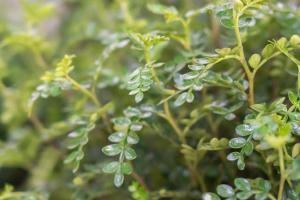What to Do with Potted Plants in Winter
As winter approaches, potted plant owners must start thinking about how to protect their greenery from the cold weather. Here are some tips and tricks for keeping your potted plants healthy and happy during the winter months:
Prepare Your Plants for Winter
Before the first frost, it's important to take some steps to prepare your plants for winter. First, prune back any dead or damaged foliage to encourage healthy new growth in the spring. Second, consider transplanting any plants that are too large for their containers into larger pots to ensure they have enough room to grow. Finally, remove any dead leaves, flowers or stems to prevent pests or fungus from taking hold and spread.
Protect Your Pots
Make sure your pots are protected from the cold. If your pots are made of clay, they are more susceptible to cracking when they freeze, so move them to a sheltered area, like a garage or a covered patio. For plastic or resin pots, you can leave them outside, but make sure they are insulated by wrapping them in bubble wrap or an old blanket. You can also place your pots on pot feet or bricks to elevate them off the ground and prevent the roots from getting too cold.
Water Your Plants Correctly
Watering your plants is essential, but you want to make sure you don't over-water or under-water them. Once the temperature drops, you can reduce the amount of water you give them, but make sure the soil doesn't completely dry out, especially for evergreen plants. Succulents and cacti prefer a drier environment, so water them even less frequently than you normally would. If you're not sure if your plant needs water, stick your finger about an inch into the soil, if it feels dry, it's time to water.
Provide Adequate Lighting
During the winter, days are shorter and the light isn't as strong. If your potted plants are in a location that doesn't get enough light, consider moving them to a brighter spot. If natural light isn't an option, you can use grow lights to provide your plants with the necessary light they need to grow. Be mindful of the temperature around the grow light, as it can dry out the soil around your plants.
Add Fertilizer if Necessary
In winter, your plants aren't growing as rapidly as they do in the warmer months, so they don't need as much fertilizer. However, if you have plants that are actively growing, or if you notice that they're not as healthy as they should be, consider adding a slow-release fertilizer to the soil. This will provide your plants with the necessary nutrients they need to grow strong and healthy.
Conclusion
With these tips, you can help your potted plants survive and thrive in the winter months. Remember to prepare your plants for winter, protect your pots, water your plants correctly, provide adequate lighting and add fertilizer if necessary. With a little bit of care and attention, your potted plants will survive the cold winter and bloom beautifully in the spring.

 how many times do yo...
how many times do yo... how many planted tre...
how many planted tre... how many pine trees ...
how many pine trees ... how many pecan trees...
how many pecan trees... how many plants comp...
how many plants comp... how many plants can ...
how many plants can ... how many plants and ...
how many plants and ... how many pepper plan...
how many pepper plan...
































